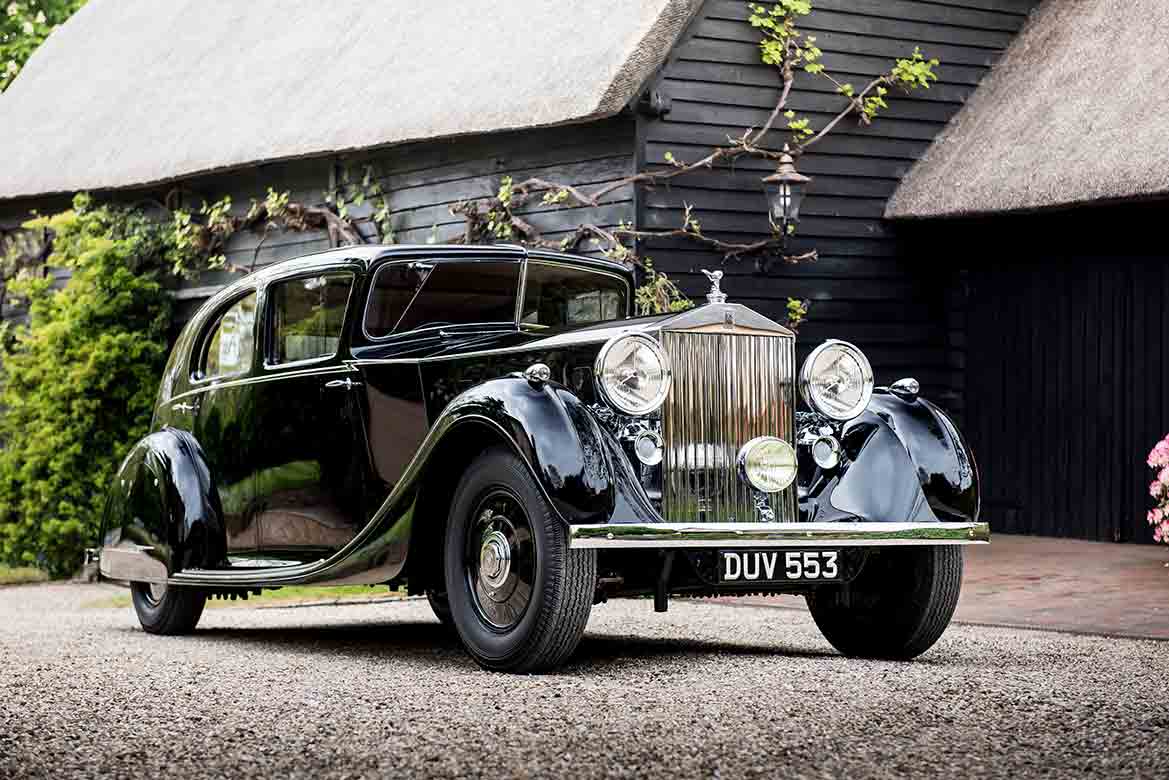01.08.2024
The fourth in the ‘Models of the Marque’ series showcases the Rolls-Royce Phantom III. Launched in 1936, it was the first model to be powered by a V12 engine, setting the template for every Rolls-Royce up to and including the modern era. It was also Sir Henry Royce’s last major design before his passing in 1933.
A brief history of the Rolls-Royce Phantom III launched in 1936
The first Rolls-Royce motor car powered by a V12 engine
Sir Henry Royce’s last major design before his passing in 1933
Naming of the marque’s first all-electric model, Spectre, was inspired by ten experimental Phantom IIIs built from 1934 to 1937
Fourth in a series celebrating landmark models from the marque’s history
Year-long retrospective marks the 120th anniversary of the first meeting between Henry Royce and The Hon. Charles Stewart Rolls in 1904
“Launched in 1936, Phantom III has a special place in the pantheon of great Rolls-Royce motor cars. It was the first to be powered by a V12 engine, setting the template for every Rolls-Royce up to and including the modern era, while also incorporating suspension and chassis technology that secured the marque’s enduring reputation for both peerless comfort and outstanding performance. There is a certain poignancy to this motor car, too. Production ceased in 1939 and, despite its technical advances and immense potential, never resumed, leaving a question of what might have been. It was also Sir Henry Royce’s last major design, which his death in 1933 meant he never saw completed. But, visionary that he was, he had established fundamental technical and design tenets that still hold true today.”
Andrew Ball, Head of Corporate Relations & Heritage, Rolls-Royce Motor Cars
As early as 1930, Sir Henry Royce realised that his large-horsepower, in-line six-cylinder Rolls-Royce engines were reaching their technical limits. In simple terms, there wasn’t much more power or torque he could feasibly extract from them. He realised that Rolls-Royce risked losing ground to its American rivals, who were already busily producing luxury cars with much more powerful engines in V8, V12, and even V16 configurations.
Royce had a wealth of experience in designing V12 aero engines, and Rolls-Royce was equally adept at making them. It was therefore a logical and natural progression for Royce to create a V12 engine for the successor to Phantom II, which had appeared in 1929.
Royce’s new engine represented significant technical progress. The new V12 was shorter than Phantom II’s in-line six-cylinder unit, with a capacity of 7.3 litres compared to its predecessor’s 7.6 litres. These more compact dimensions allowed a shorter bonnet and larger passenger compartment, giving coachbuilders more scope than earlier Rolls-Royce rolling chassis. Most importantly, however, the new engine delivered the increased power Royce was seeking. In its initial form, it produced 165 H.P., compared to the 120 of Phantom II, rising to 180 in later motor cars.
The chassis, too, was a major leap forward in design. In another first for the marque, Royce equipped Phantom III with independent front suspension, an innovation that considerably increased both ride comfort and steering control. Characteristically, his design team also incorporated a great number of smaller engineering advances that owners and passengers would probably never notice but greatly reduced the transmission of noise, vibration and harshness caused by poor road surfaces. Taken together, these developments made the Phantom III one of the quietest and smoothest-riding cars of the 1930s. When fitted with Royce’s preferred lightweight coachwork, it was capable of reaching 100 miles per hour.
Royce saw experimental versions of the engine completed, but his death in April 1933 came a year before the first test cars were ready. Ten of these experimental Phantom III motor cars were built between 1934 and 1937 under the codename Spectre, a storied name that lives on today in the marque’s first all-electric model.
The first production Phantom III chassis, sporting a saloon-with-division body built by H. J. Mulliner, was delivered in August 1936. In all, 710 examples were produced, before Rolls-Royce ceased its motor car production in 1939; the last Phantom III was purchased in June 1940.
The directors of Rolls-Royce knew that, once peace returned, they would be operating in a very different world – and that there would be no place in it for a motor car like Phantom III. Perhaps even more so than in 1918, the marque would have to focus its energies on models that were more in keeping with the time, while continuing to build upon the standards of quality and refinement expected of a Rolls-Royce. So, despite its technical brilliance, superlative performance and immense potential for further development, its brief but transformative life was over. Yet its influence would be felt in every Rolls-Royce motor car right up to and including the V12-powered models still being built at Goodwood today. An enduring testament to both the excellence of Phantom III’s design and engineering, and the visionary talents of its creator.

